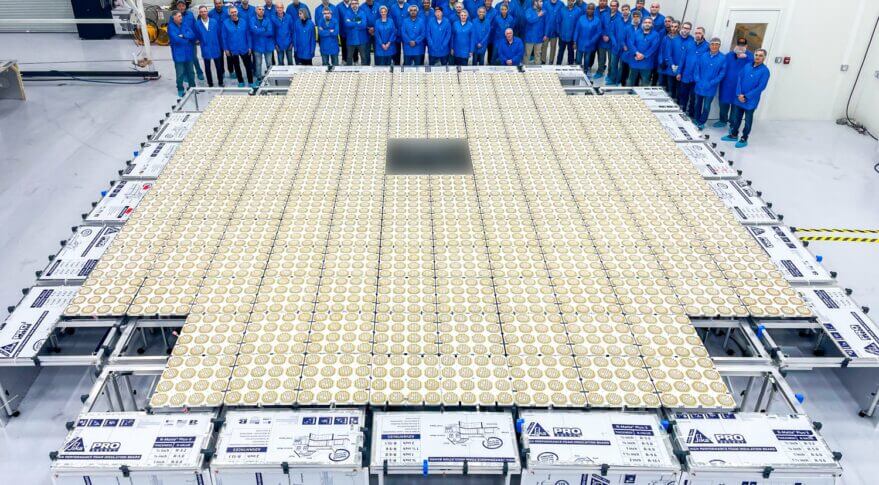TAMPA, Fla. — Supply chain issues have pushed out the launch of AST SpaceMobile’s first operational satellite about six months to late 2023, the cellphone-compatible broadband constellation startup said Aug. 15.
The Texas-based company said its first five satellites, now slated to launch aboard the same SpaceX Falcon 9 rocket, will also be 50% smaller than initially planned to avoid further delaying commercial services.
They will leverage existing components used for the constellation’s BlueWalker 3 prototype to accelerate production, AST SpaceMobile chief financial officer Sean Wallace said during the company’s financial results.
This includes “certain integrated circuit components, navigation controls, and antennas.”
In a regulatory filing, AST SpaceMobile said it expects these initial satellites will be “of similar size and weight” to its 1,500-kilogram BlueWalker 3 prototype. BlueWalker 3, which is slated to launch next month, has a 64-square-meter phased array antenna for testing communications with smartphones and other devices at broadband speeds.
Although initial BlueBirds would “have design improvements” over BlueWalker 3 “for enhanced power efficiency and throughput designed to increase capacity,” it is unclear how their reduced size will affect planned performance and coverage.
The company expects future generations of BlueBirds “to derive greater throughput” by taking advantage of technology improvements and larger antennas.
Rising costs
AST SpaceMobile said the first five BlueBirds would also use flexible chips that can be reprogrammed after they are made, while later satellites will migrate to application-specific integrated circuits (ASICs) to increase production efficiencies.
“We benefit from this change in mix of satellites as it will enable AST to construct and launch the satellites sooner,” Wallace said.
“But this will also result in an increase in cost per satellite due to the current higher cost of these first generation components.”
He said the expected cost for AST SpaceMobile’s first 20 BlueBirds increased “a little over 14%” to $16 million per satellite as inflation and rising supply chain prices also take their toll.
AST SpaceMobile, which listed shares on the Nasdaq stock exchange in April 2021 after merging with a special purpose acquisition company (SPAC), said it has enough financial resources to cover operations over the next 12 months despite the mounting costs.
The company reported $35 million in operating expenses during the second quarter of 2022, and had $202 million in cash reserves at the end of June.
According to the company, the first five BlueBird satellites in low Earth orbit would enable it to start generating revenues from a “limited, noncontinuous” service in certain countries.
However, Wallace said AST SpaceMobile will need to raise additional capital to deploy the 20 satellites it needs for the first phase of planned commercial services around the equatorial region.
The company did not give an update on the deployment plan for the rest of the constellation.
Previously, AST SpaceMobile has outlined plans to deploy 110 satellites before the end of 2024 to achieve “substantial global” mobile coverage. It also has an agreement with SpaceX that provides a framework for ordering additional launches up until the end of 2024.
AST SpaceMobile said Aug. 9 that BlueWalker 3 had arrived at Cape Canaveral, Florida, for a launch on a Falcon 9 with other passengers in early to mid-September.
In November, SpaceX is due to launch two more satellites for startup Lynk Global’s cellphone-compatible broadband network.
The Virginia-based startup expects to launch initial commercial services before the end of this year — if it can secure a ride for a fourth operational satellite.

